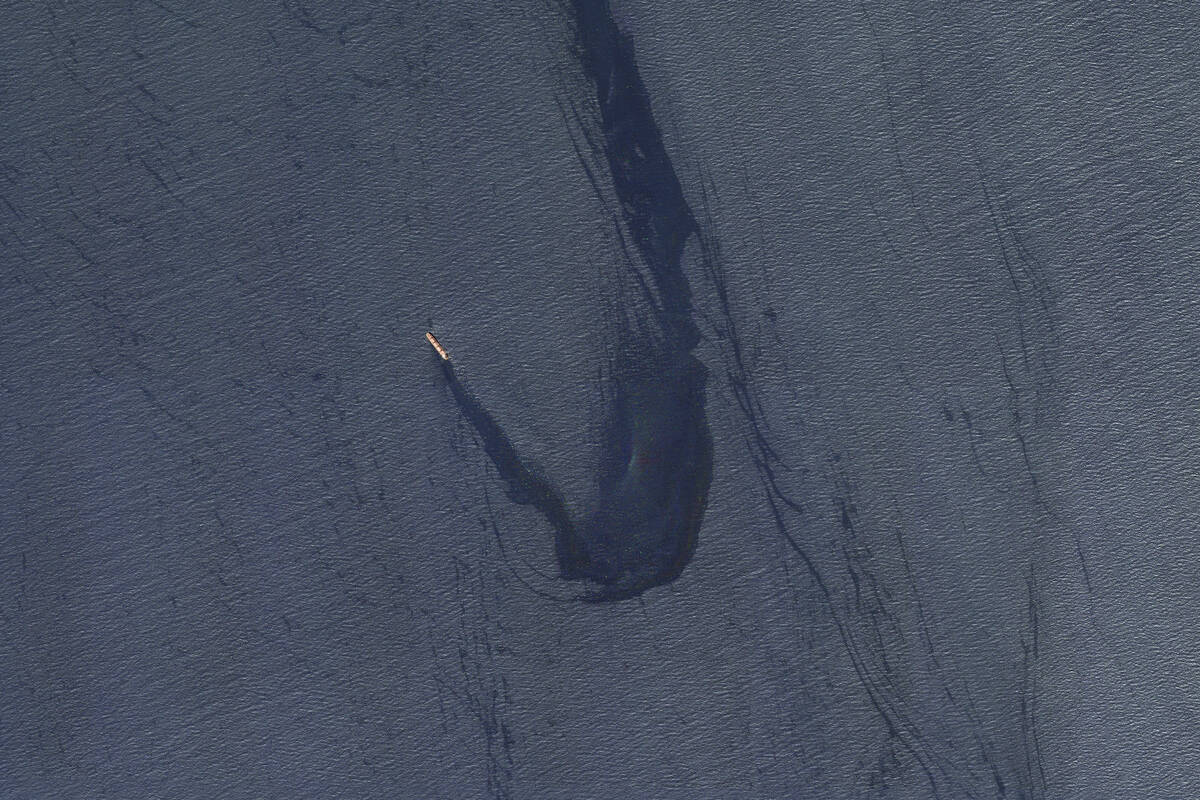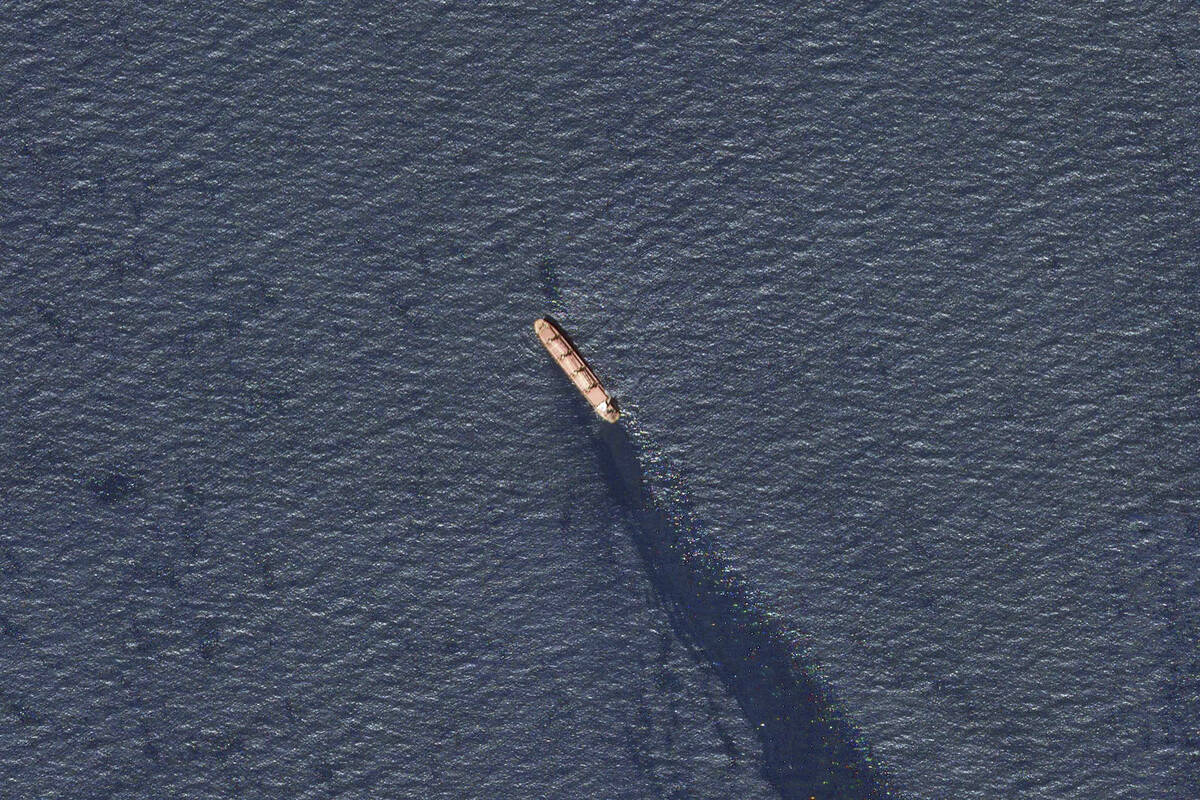US, British answer terrorist surge in Red Sea attacks on ships
WASHINGTON — The U.S. and Britain struck more than a dozen Houthi targets in Yemen on Saturday, answering a recent surge in attacks by the Iran-backed terrorist group on ships in the Red Sea and Gulf of Aden, including a missile strike this past week that set fire to a cargo vessel.
According to U.S. officials, American and British fighter jets hit about 18 sites across multiple locations, targeting missiles, launchers, rockets, drones and unmanned surface and underwater vehicles. The officials spoke on condition of anonymity in order to provide early details of an ongoing military operation.
This is the fourth time that the U.S. and British militaries have conducted a combined operation against the Houthis since Jan. 12. But the U.S. has also been carrying out almost daily strikes to take out Houthi targets, including incoming missiles and drones aimed at ships, as well as weapons that were prepared to launch.
The U.S. fighter jets launched from the USS Dwight D. Eisenhower aircraft carrier, which is currently in the Red Sea.
President Joe Biden and other senior leaders have repeatedly warned that the U.S. won’t tolerate the Houthi attacks against commercial shipping. But the counterattacks haven’t appeared to diminish the Houthis’ campaign against shipping in the region, which the terrorists say is over Israel’s war against Hamas in the Gaza Strip.
The group has launched at least 57 attacks on commercial and military ships in the the Red Sea and Gulf of Aden since Nov. 19, and the pace has picked up in recent days.
“We’ve certainly seen in the past 48, 72 hours an increase in attacks from the Houthis,” Pentagon spokeswoman Sabrina Singh said in a briefing Thursday. And she acknowledged that the Houthis have not been deterred.
“We never said we’ve wiped off the map all of their capabilities,” she told reporters. “We know that the Houthis maintain a large arsenal. They are very capable. They have sophisticated weapons, and that’s because they continue to get them from Iran.”
There have been at least 32 U.S. strikes in Yemen over the past month and a half; a few were conducted with allied involvement. In addition, U.S. warships have taken out dozens of incoming missiles, rockets and drones targeting commercial and other Navy vessels.
Earlier Saturday, the destroyer USS Mason downed an anti-ship ballistic missile launched from Houthi-held areas in Yemen toward the Gulf of Aden, U.S. Central Command said, adding that the missile was likely targeting MV Torm Thor, a U.S.-Flagged, owned, and operated chemical and oil tanker.
The U.S. attacks on the Houthis have targeted more than 120 launchers, more than 10 surface-to-air-missiles, 40 storage and support building, 15 drone storage building, more than 20 unmanned air, surface and underwater vehicles, several underground storage areas and a few other facilities.
The terrorists’ supreme leader, Abdul Malik al-Houthi, announced this past week an “escalation in sea operations” conducted by his forces as part of what they describe as a pressure campaign to end Israel’s war on Hamas.
But while the group says the attacks are aimed at stopping that war, the Houthis’ targets have grown more random, endangering a vital waterway for cargo and energy shipments traveling from Asia and the Middle East onward to Europe.
During normal operations, about 400 commercial vessels transit the southern Red Sea at any given time. While the Houthi attacks have only actually struck a small number of vessels, the persistent targeting and near misses that have been shot down by the U.S. and allies have prompted shipping companies to reroute their vessels from the Red Sea.
Instead, they have sent them around Africa through the Cape of Good Hope — a much longer, costlier and less efficient passage. The threats also have led the U.S. and its allies to set up a joint mission where warships from participating nations provide a protective umbrella of air defense for ships as they travel between the Suez Canal and the Bab el-Mandeb Strait.
Central Command launched attacks on Houthi-held areas in Yemen on Friday, destroying seven mobile anti-ship cruise missiles that the military said were prepared to launch toward the Red Sea.
Central Command also said Saturday that a Houthi attack on a Belize-flagged ship on Feb. 18 caused an 18-mile oil slick and the. military warned of the danger of a spill from the vessel’s cargo of fertilizer. The Rubymar, a British-registered, Lebanese-operated cargo vessel, was attacked while sailing through the Bab el-Mandeb Strait that connects the Red Sea and the Gulf of Aden.
The missile attack forced the crew to abandon the vessel, which had been on its way to Bulgaria after leaving Khorfakkan in the United Arab Emirates. It was transporting more than 41,000 tons of fertilizer, according to a Central Command statement.
The Associated Press, relying on satellite images from Planet Labs PBC of the stricken vessel, reported Tuesday that the vessel was leaking oil in the Red Sea.
Yemen’s internationally recognized government on Saturday called for other countries and maritime-protection organizations to quickly address the oil slick and avert “a significant environmental disaster.
























